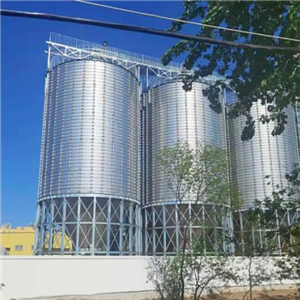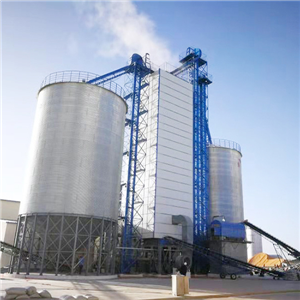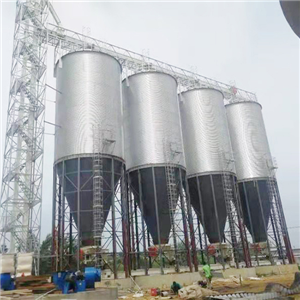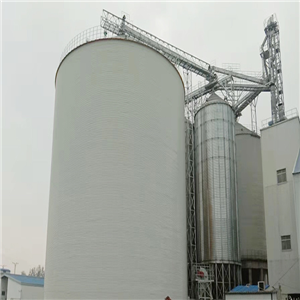The Economics of Grain Loss Reduction: Why Minimizing Waste Matters as Much as Boosting Yields for Food Security
02-07-2025
As the global demand for food continues to surge, LIAONING QIUSHI Silo Equipment Engineering Co., Ltd. is spotlighting a crucial yet often overlooked aspect of food security: reducing post-harvest grain losses. Through innovative technologies and smart storage solutions, the company is transforming the narrative from mere yield increase to comprehensive resource preservation, ensuring that every harvested grain counts.edge-biting steel silo
In a demonstration site, a 18-meter conical-bottom intelligent grain storage and drying silo hums with activity. Inside, the temperature holds steady at 22.3°C, and humidity reads 54.7%. The moment these readings deviate from the optimal range, the ventilation system springs into action automatically. "This silo, with a capacity of 100 tons, is equipped with 16 ventilation ducts and 52 temperature-humidity sensors," explains a LIAONING QIUSHI engineer. "It not only streamlines the process by eliminating traditional sun-drying and manual drying steps but also generates an annual profit increase of around 60,000 yuan through reduced grain spoilage."edge-biting steel silo
The magic lies in the silo’s intelligent design. A 3D model on the control screen reveals real-time airflow patterns inside the silo, showcasing how it leverages natural cold sources in winter to lower grain temperatures. During summer, grain cooling machines kick in to maintain a consistently low-temperature environment. Research shows that for every 1°C drop in grain temperature, the rate of quality deterioration decreases by 5%. The results speak for themselves: after a year of storage, wheat in these intelligent silos retains a germination rate of over 95%, compared to the sub-85% rate typical of conventional storage methods.edge-biting steel silo
Beyond quantitative gains, these intelligent silos safeguard grain quality. Harvested wheat enters the silo via conveyor belts and undergoes 24/7 drying, with humidity levels displayed in real-time on digital screens. "In the past, drying grain depended entirely on the weather," remarks a local farmer. "Now, we can adjust the temperature at our fingertips." Looking ahead, plans are underway to integrate pest monitoring features, enabling instant alerts via mobile apps. "These drying silos have truly solved a major headache for farmers!"edge-biting steel silo
The upgrade extends to the entire storage ecosystem. At Zhoucun District Grain Center, an intelligent transformation last year connected the facility to a provincial cloud platform. From the central control room, operators can monitor temperature, humidity, and even pest conditions in real-time, achieving full coverage of information networks, operational processes, and video surveillance.edge-biting steel silo
"Digitalized grain storage marks a paradigm shift," notes a LIAONING QIUSHI representative. "It empowers us to shift from reactive, weather-dependent practices to proactive, data-driven management."edge-biting steel silo
As the last grain enters the silo through intelligent sorting equipment, it’s clear that technology is rewriting the age-old narrative of agriculture. What was once backbreaking labor "facing the loess, backs to the sky" has evolved into precise, digitalized control. LIAONING QIUSHI is harnessing the power of new agricultural productivity to drive rural revitalization, proving that in the modern era, reducing grain losses is not just an economic strategy—it’s an imperative for global food security.edge-biting steel silo




